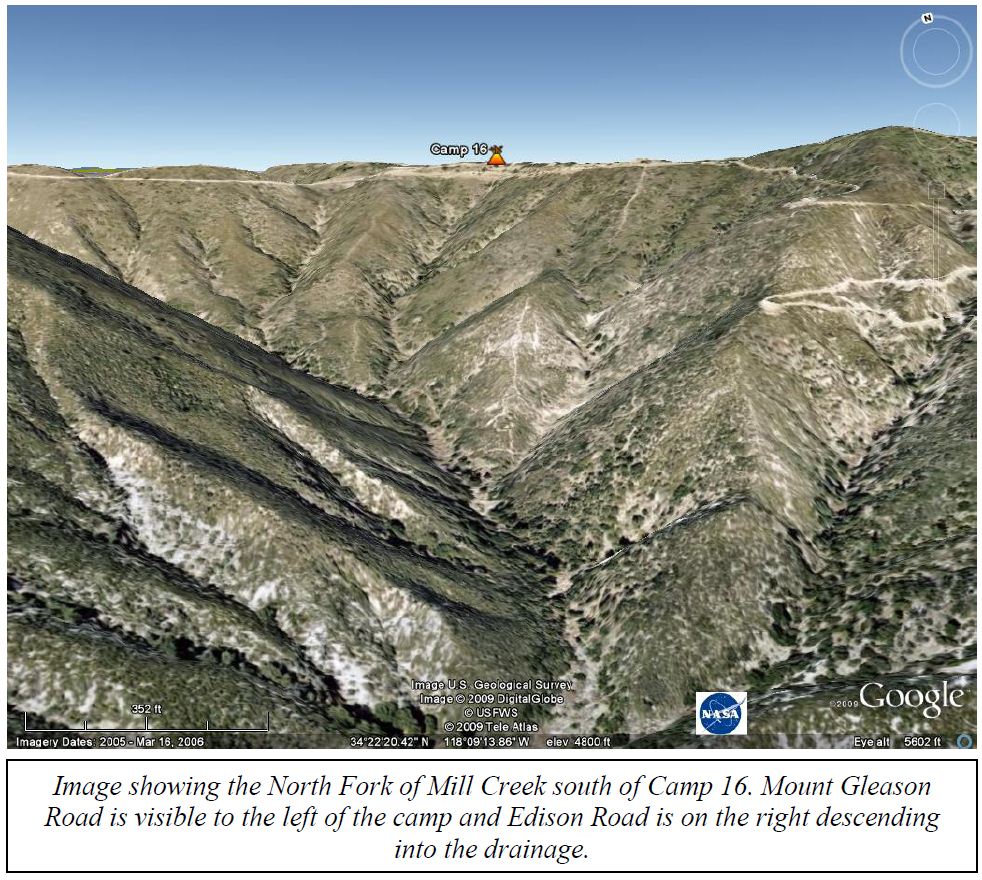At Firehouse World in San Diego, Los Angeles County Firefighter Rob Morales told the story of what happened at Camp 16 on August 30, 2009 when the Station fire raced up a chimney canyon, through the camp, and claimed the lives of Captain Ted Hall and Firefighter Arnie Quinones, of the Los Angeles County Fire Department.
Here is an excerpt from an article at Firehouse.com written by Ed Ballam:
…[Rob Morales] said he pulled a fire watch the night before the fire hit and he knew it was big fire by the roar and the glow, but it didn’t make a huge run overnight. He felt safe and thought the fire would pass by the camp and everything would be fine. That seemed to be the prevalent thought of the whole crew. When day broke, Morales said he had been angling to be with Capt. Hall on his truck and he was disappointed when Hall asked Quinones to go with him on the fire patrol.
Morales went back to his crew and kept an eye on the fire and watched for hot spots and embers as it came closer.
At one point, embers showered the camp and he went to see what he could do to put them out. “I soon realized there were way too many and there was nothing I could do,” Morales said.
As the fire came closer, Morales sheltered behind a metal door briefly. He thought they might lose a couple of buildings, but everyone would be OK. The fire grew worse and Morales decided to beeline to the chow hall where the other firefighters in the camp were sheltering as well.
As he headed there, he thought that would be the end of him. “I didn’t think I was going to make it,” he said. “I heard my crew screaming like you never want to hear them scream.” He recalled looking out and seeing virtually everything in the camp on fire. “I knew we were losing and I hollered the F-word as loud as I could,” he said.
A window in the chow hall broke and then someone in the crew called out that they were going to die in the building if they stayed.
“I made a decision to leave the building,” Morales said. “I decided that if I was going to die, they were going to find me outside and not have to dig through a pile of bodies to find me.”
Even though he was in great peril, Morales said he never stopped thinking about Hall and Quinones, who he knew were either in trouble, or were outrunning the fire as they headed down the canyon.
As Morales made his way across the camp, he noticed that the area where the privately owned vehicles were parked was not burned and the air would sustain life. He radioed to the crew to run to the area where the trucks were parked and told them the air was good.
As all the members of the crew gathered, he told them to jump in the trucks as they evacuated.
“I didn’t care what truck they got into, we just needed to get out of there,” Morales said, adding that he was hoping they would catch up with Hall and Quinones on the road.
Read the rest of the article.
Here is an image we posted on May 16, 2010 when we covered the release of the official report about the burnover of Camp 16, which is incorrectly referred to in the Firehouse.com article as “Station 16”. It is located at the top of the canyon, near the icon on the ridge.


